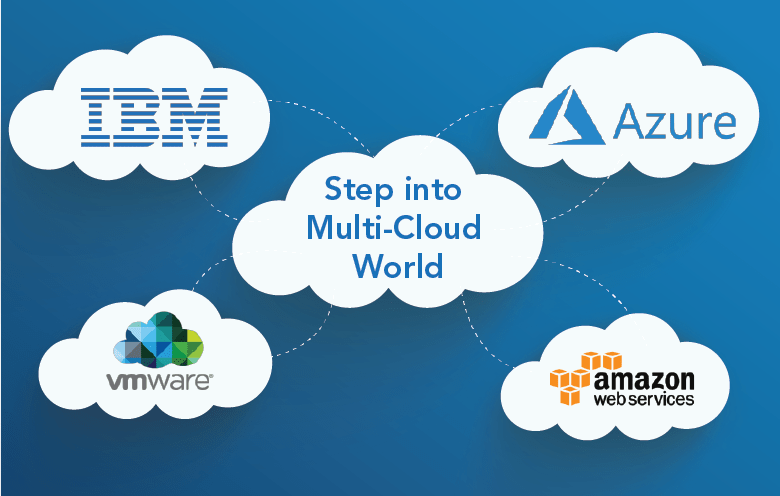Multi-cloud means several different public clouds are used to support one or more applications instead of just a single public cloud.
What is multi-cloud?
In cloud computing, a cloud is a collection of servers that cloud customers access over the Internet. Typically, each cloud is managed by a cloud provider – a company that offers cloud services. A public cloud is a cloud that more than one customer shares.
“Multi-cloud” means multiple public clouds. A company that uses a multi-cloud deployment incorporates numerous public clouds from more than one cloud provider. Instead of a business using one vendor for cloud hosting, storage, and the full application stack, in a multi-cloud configuration, they use several.
Multi-cloud deployments have several uses. A multi-cloud deployment can leverage multiple IaaS (infrastructure-as-a-service) vendors, or it could use a different vendor for IaaS, PaaS (platform-as-a-service), and SaaS (software-as-a-service) services. Multi-cloud can be purely for redundancy and system backup or incorporate different cloud vendors for other services.
Most businesses that move to the cloud will end up with multi-cloud deployment. A multi-cloud deployment can even come about unintentionally due to shadow IT (see below).
What is the difference between multi-cloud and hybrid cloud?
A multi-cloud can also be a hybrid cloud, and a hybrid cloud can be a multi-cloud, but these terms represent two distinct concepts.
“Hybrid cloud” describes the mixing of two or more distinct types of infrastructure: it combines a private cloud, an on-premise data center, or both with at least one public cloud. Multi-cloud refers to several different public clouds being deployed, and it doesn’t necessarily include a private cloud, although it can.
What are the pros and cons of using a multi-cloud strategy?
Pros:
- Reliability and/or redundancy: Using a multi-cloud deployment, a business avoids putting all its eggs in one basket. If one cloud goes down, some functionality will still be available to users from the other deployed clouds. In addition, one public cloud could be used as a backup to another cloud.
- Reduced vendor lock-in: Moving to the cloud means relying on external cloud providers, and as companies use these vendors more and more, it can become difficult to move away from them. However, systems and storage are spread across multiple vendors if a multi-cloud strategy is used. Therefore, it’s easier to migrate away from using one of these vendors because most of the infrastructure remains in place during the migration.
- Potential cost savings: If a business does not commit to using one cloud vendor for all its infrastructure needs, it is free to pick and choose the most affordable services from different vendors.
Cons:
- Complexity of management: A multi-cloud deployment means interfacing with several different vendors, each with other processes and technology. In addition, it becomes harder to have complete visibility into the technology stack with data stored and processes running in multiple clouds.
- Increased latency: If services in multiple clouds need to talk to one another to fulfill user requests, that can introduce latency, depending on how tightly the clouds are integrated, how far apart the data centers are geographically, and how often multiple clouds need to interact.
- Greater attack surface: The more pieces of software and hardware are integrated, the more vulnerabilities there likely are.
- Performance and reliability: It cannot be easy to balance loads across different clouds, especially if the data centers are geographically far apart. ( Load Balancing can balance loads across clouds.)
What is shadow IT?
A multi-cloud deployment can come about unintentionally as a result of shadow IT. Shadow IT is when internal teams set up technical systems or use software products without official approval or oversight from the larger organization. A simple example would be if a company’s employees use a chat app not sanctioned or managed by the company to communicate about business activities.
Shadow IT can find its way into application architecture too. Employees may incorporate cloud services into a company’s technology stack before receiving official approval as a shortcut for getting things done or out of necessity.





